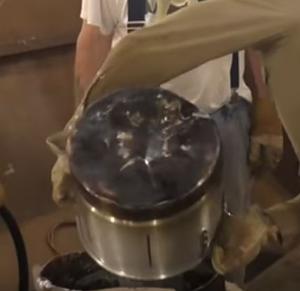Recently I posted a link to a guy building a 74' sailboat and smelting 17,000 pounds of lead for the ballast. Today I was watching another of his videos where they were pouring relatively small amounts of lead into small areas of the keels (twin keeled boat). They were pouring from their big pot into a 15 gallon or so aluminum crawfish pot to get the lead from the big pot to the desired location. No, they were not filling the smaller pot. Have a look at the dent they got in the pot. The builder commented that the aluminum was distorting at about the temperature of the molten lead. The dark area shows the fill level of the pot.


|
   
   
|


|







 Reply With Quote
Reply With Quote















